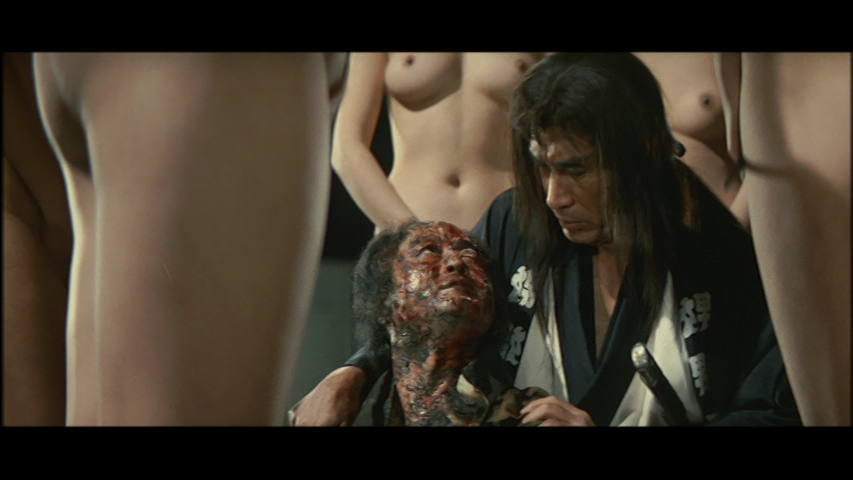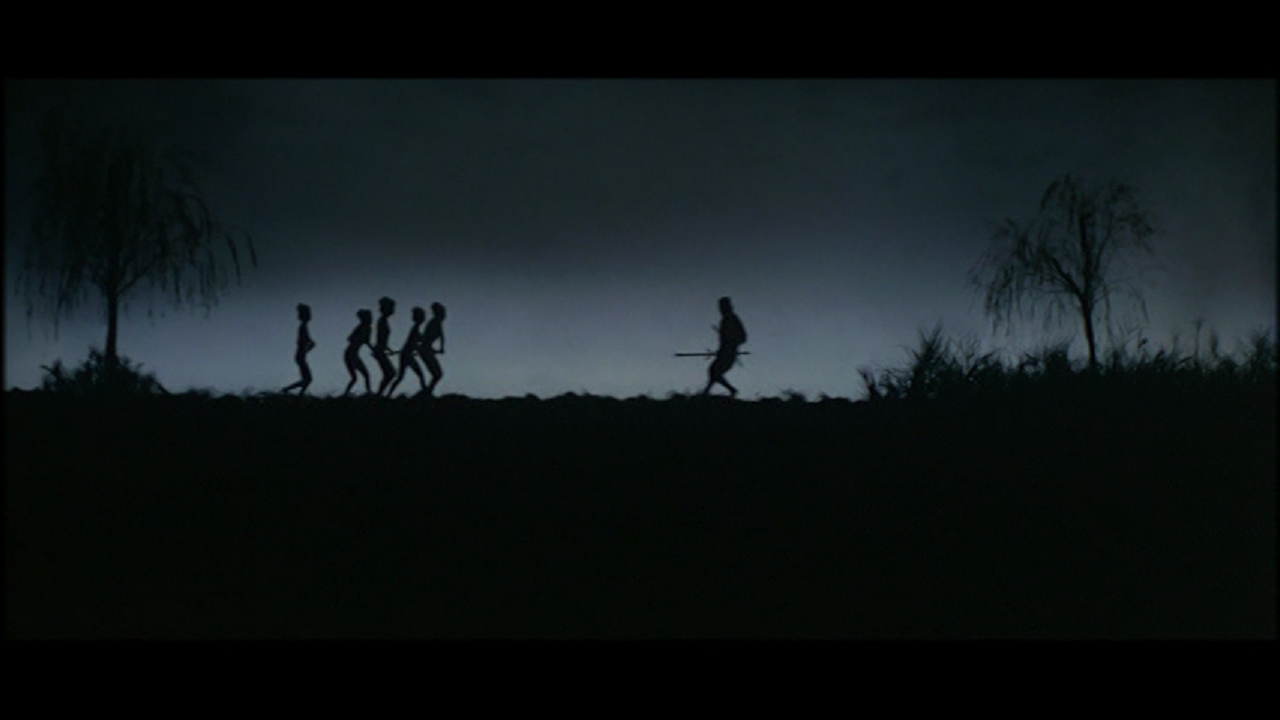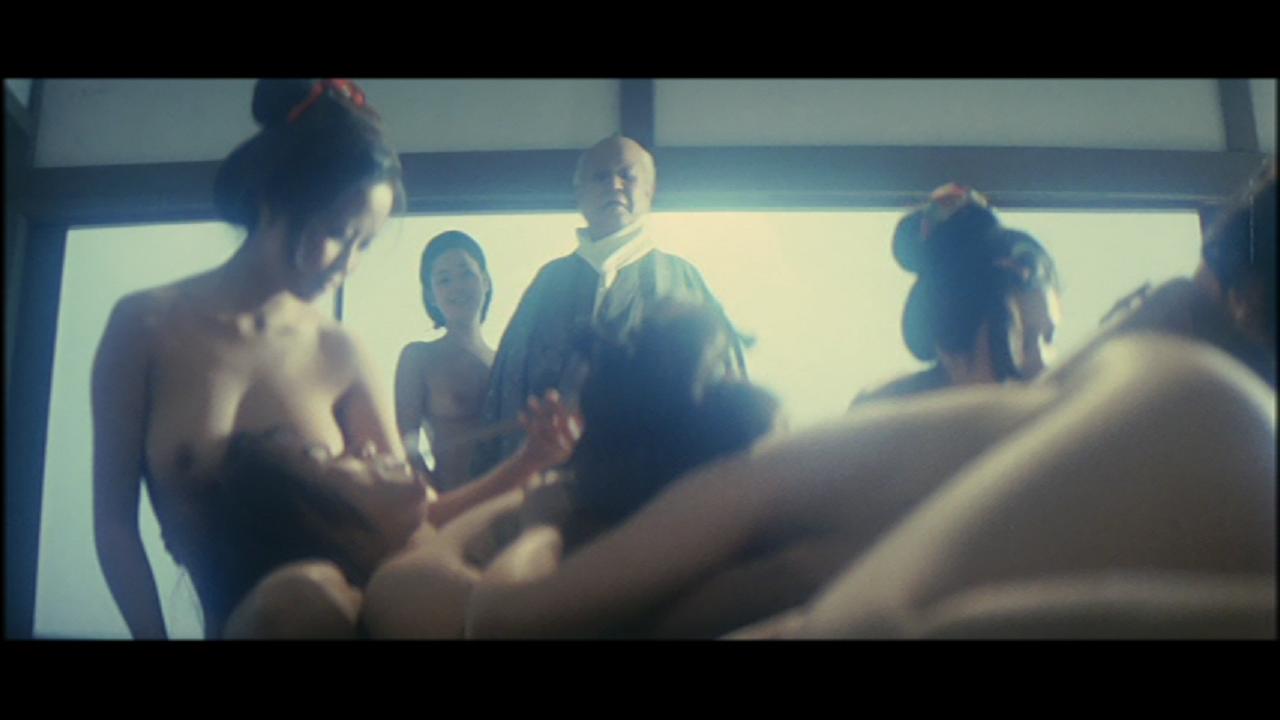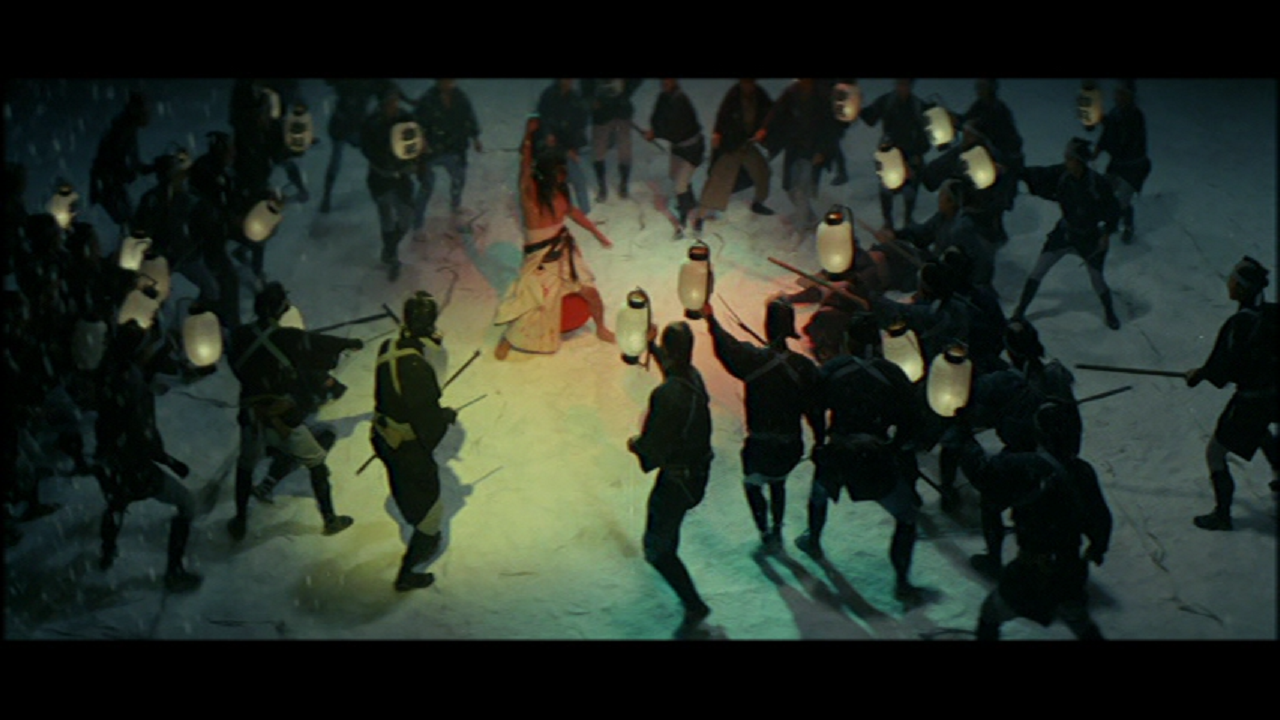Last Updated on October 17, 2020 by rob
Ronin Shino (Tetsuro Tanba) throws himself into a river to escape his enemies but is saved from death by the Bohachi’s, a once powerful clan of samurai who revel in depravity using rape and torture to turn women into sex slaves and assassins. After agreeing to a request by the Bohachi to clear the pimps from a local town Shino survives an attack by Ninjas from a rival clan only to find himself betrayed by the Bohachi leader. But after taking a gruesome revenge Shino walks straight into old enemies who wait for him outside the Bohachi clan gates.
Let’s cut to the chase, Bohachi Bushido is bloody great! This wonderfully titillating and blood-spattered tale is far and away its director’s best film. Central to its appeal (its bevy of topless babe killers aside) is the dilemma of its anti-hero Shino (Tetsuro Tanba). He’s a man so weary of life – “To die is hell, but to live is also hell” he says – yet so deadly that no one can put him out of his misery even after – in the film’s exciting climax – he’s poisoned with opium and surrounded by a battalion of police. Tanba’s Clint Eastwood-esque performance – especially his impassive reaction to the Bohachi’s parade of S&M depravity – makes clear this is a man for whom human evil holds no surprises and yet he’s no nihilist either. Despite his outwardly ruthless image Shino takes pity on a young girl sold by the Bohachi (Yuriko Hisimi), displays compassion for Himejiro (Shiro Kuno), a Bohachi member fatally injured in a sneak attack and provides an alibi for the Bohachi’s female assassins who face death for breaking the rules.
All this despite being warned by their leader that the clan’s code strictly forbids any kind of empathy between members. “Protect them if you want,” he warns Shino, “but they are Bohachi women. They will not thank you”! Even when Shino cuts down the pimps and clients of the town’s brothels at the Bohachi’s request it’s made clear he’s not doing it for them but because the townsfolk’s debauchery offends him personally. This combination of a man unbeatable in combat yet pursued by an enemy who won’t leave him alone, a man morally righteous yet seeking a way out from the hell he perceives as life, makes Shino – for me at least – the most interesting of the protagonists from the Lone Wolf, Snowblood, Female Yakuza, Hanzo cycle of the early ’70’s. Whilst perfectly satisfying in and of itself this nonetheless leaves so many intriguing questions about the origin of Shino, his pursuers and of course the ultimate fate of its enigmatic hero that it’s a real shame there were no sequels (although there was a reworking in 1974’s not uninteresting Bohachi Bushido: Saburai with Goro Ibuki in the lead and Takashi Harada directing).
Director Teruo Ishii may not be a visual stylist in the DePalma mould (his camera is always observer rather than participant) but his mise-en-scene is really impressive. The opening bridge fight – set against a stylised sunset – as Shino dispatches a handful of ronin, blood spurting in slow-motion and clashing swords creating sparks animated into credits really establishes the film’s beguilingly dreamy tone. A sword vs gun challenge between Shino and the Bohachi’s head ronin has the director dim the lighting in the middle of the shot to leave just those two characters illuminated and yet the moment feels perfectly judged. The Bohachi leader’s pale make up resembles a malevolent, corpulent doll and several carefully designed shots feature characters framed as silhouettes against stylised backdrops – elements that suggest the influence of Kabuki theatre.
The film’s considerable nudity (this packs more topless shots of assorted gorgeous girls than a dozen softcore pics put together although any glimpse of pubic hair is strictly forbidden and the girls habit of keeping one hand coyly placed over their snatch is really rather sweet) benefits from the kinky ideas behind it. We quickly learn the Bohachi girls are both sex fiends and killers and yet they look so darn sweet! It’s this knowing juxtaposition of innocence and danger which gives their encounters with Shino an edge because we can never be sure if or when they’re going to turn on him. The film’s relentless fascination with sex twisted into something evil – and yet seductively so – both excites and disturbs. Cinematographer Jubei Suzuki consistently frames the women’s bodies in interesting and sensual compositions whether it’s a sex scene or an action scene.
It’s quite something to watch the Bohachi girls – all naked, naturally – fight a Ninja assassin. Combining nudity with violence and thrills could easily come off as camp or just plain hilarious but Ishii keeps it all on track and the results are kinky and exciting in a way you don’t often get in this kind of softcore exploitation fare. San Kaji’s script, adapted from Kazuo Koike’s manga, packs a lot into its 81 minute running time and nimbly handles what is a fairly complicated setup whilst providing bigger and bigger showcase sequences for Shino and the girls to strut their stuff. In fact the latter are so good one could quite easily envisage a spin off series featuring them as assassins for hire (director Yasuharu Hasebe actually tried something similar with the following year’s lacklustre The Naked Seven but comparing the two films makes clear just how impressive an accomplishment this is) or at least you could if Shino hadn’t killed them all off by the end!
Speaking of which, it’s when our hero is drugged with opium by the devious Omon (Yuriko Hisimi) and seduced into an orgy with four of the girls that the director really lets loose. Ishii drenches the set in lurid colours, conveying the effects of the opium on Shino by throwing in strobe lighting effects and having the Bohachi leader make a downright demonic appearance to inform Shino that his fate is to be tossed into the dungeon to join a syphilitic mad woman. The combination of sound, lighting and composition proves almost overwhelming and when the girls turn in an instant from sex kittens into assassins and attack Shino the film attains a delirious anything-goes intensity. During the final battle (Hajime Kaburagi’s pounding score really coming into its own here) Shino slices his way through dozens of adversaries – body parts flying left, right and centre – Ishii pours coloured light onto this man’s figure as he makes what sure looks like his final stand. It’s as if Shino’s unconquerable spirit is somehow embodied in these wild colours that are all over him. Fantastic stuff. Boy, would I love to see this on a big cinema screen!




